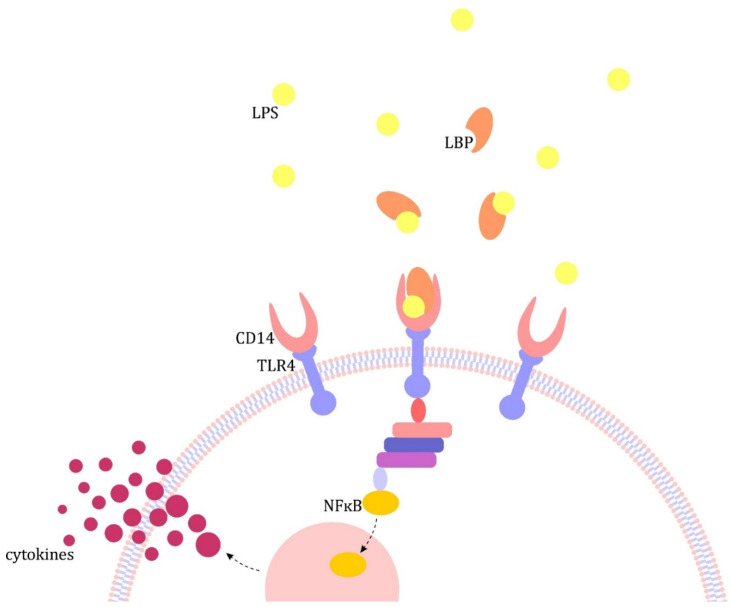Figure 1.
Pathogenesis of sepsis on the example of lipopolysaccharide (LPS) [4]. The major pathomechanism is the formation of complexes in the blood with lipopolysaccharide binding protein (LBP), which in turn binds to CD14 receptors present on monocytes/macrophages and neutrophils and circulating in the plasma. The resulting complex activates Toll-like receptors (TLRs), which transmit the signal inside the cell, leading to the translocation of the nuclear factor kB (NF-kB) to the cell nucleus and activation of pro-inflammatory cytokine gene promoters, including interleukin (IL) 1 and tumor necrosis factor α (TNF-α) [9].

